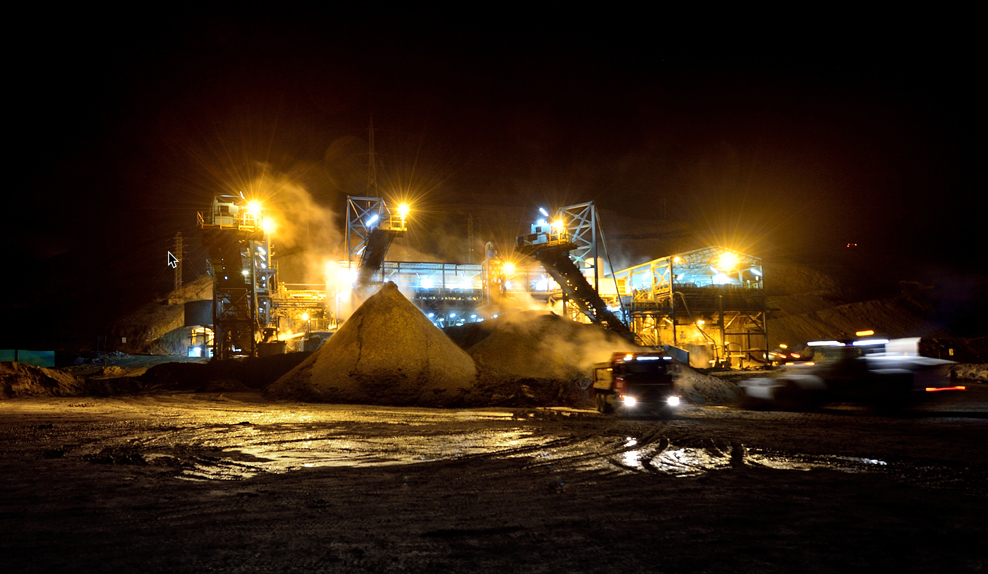As demand implodes, zinc supply chain starts to adjust

(The opinions expressed here are those of the author, Andy Home, a columnist for Reuters)
The London Metal Exchange (LME) zinc price has bounced by 20% from its March low of $1,685 a tonne to $2,020.
This is part of a broader mini-recovery across the base metals complex as the market focuses on the supply shock running alongside the demand shock caused by the spread of the coronavirus.
Lockdowns and quarantine measures have taken a particularly heavy toll of the zinc supply chain, with mine closures in key producer countries such as Peru and Mexico.
Analysts at Goldman Sachs estimate that 25% of global zinc mine supply has been forced either to shut down completely or curtail operations.
However, the title of the bank’s April 21 research note – “The recent zinc rally is a churn not a turn” – tells you that Goldman does not expect much more price upside.
The analyst consensus is that a more fundamental rebalancing of supply and demand will be needed to save zinc from revisiting the price lows.
There are signs, though, that the process is already starting.
25% of global zinc mine supply has been forced either to shut down completely or curtail operations
Price casualties
Mining companies in Peru are set to restart operations in the coming days and ramp up to about 80% of normal production levels in a month, according to Pablo de la Flor, executive director of the National Society of Mining, Petroleum and Energy.
However, not all of them may return.
The zinc price collapse is forcing some miners to idle production irrespective of local quarantine rules.
Early casualties include Coeur Mining’s Silvertip operations and Trevali’s Caribou mine, both in Canada.
“As the pandemic continues to depress zinc prices, we have taken strong measures to reduce cash outflows and preserve liquidity,” Trevali said of its decision to place Caribou on care and maintenance until further notice.
The mine produced 34,000 tonnes of zinc last year.
But it’s not only smaller operators.
Glencore has reduced its 2020 zinc production guidance by 105,000 tonnes to 1.16 million tonnes, partly reflecting temporary covid-19 closures at the Matagami mine in Canada and the Antamina mine in Peru, but also the deferral of a new mine in Kazakhstan.
Development of the Zhairem mine will be completed, but “delivery to market of expected zinc production (is) being intentionally delayed until 2021”, the company said in its first-quarter production report.
This is reminiscent of Glencore’s voluntary 500,000-tonne cut in zinc production during the previous major price downturn in 2015.
The company’s chief executive, Ivan Glasenberg, has been an outspoken critic of the mining industry’s history of prioritising volume over value at times of low prices.
Will others heed his call this time around?
One to watch is Lundin Mining, which has suspended the expansion of its Neves Corvo mine in Portugal.
It cited covid-19 restrictions at the time, but market conditions are now looming equally large.
Raw materials market turning
Zinc mine curtailments, whether related to the coronavirus or prices, are becoming more evident in the raw materials market.
This year’s benchmark deal on zinc treatment charges – the cost of converting mined concentrates to refined metal – is already looking dated.
The 2020 benchmark was set at a 12-year high of $299.75, reflecting an expected massive surplus of concentrates.
Spot treatment charges have since slid to a one-year low of $255, indicating increased smelter competition for mined concentrates.
China is the global hub of zinc smelting capacity and Chinese miners have not been immune from the effect of falling prices, though quantifying domestic production is a notoriously hard exercise.
The country’s imports of concentrates boomed over 2018 and 2019 but are likely to slow sharply over the coming months.
Goldman Sachs now expects global mined zinc production to contract by 450,000 tonnes this year, compared with a previous forecast for an increase of 630,000 tonnes.
No relief for refined market
However, this nascent tightness in the raw materials segment of the supply chain is not going to generate any immediate turnaround in the market for refined metal.
Goldman, for example, has lifted its estimate on the surplus of refined zinc this year to 990,000 tonnes from 400,000 tonnes.
That is one of the most bearish assessments out there, but it rests on two widely acknowledged realities.
The first is that the zinc market has spent the past two years transitioning from a shortage to an abundance of mined supply.
Smelters came into 2020 with ample concentrates stocks and a tailwind behind them.
China’s refined metal production, for example, surged 11% in the first three months of this year.
The growth rate slowed in April, when production was still up on March but marginally below levels a year earlier, as raw materials availability acted as a brake.
Goldman is forecasting a 7.5% slump in usage, close to the 10% contraction during the global financial crisis a decade ago
However, even slower production is too much production right now because the second accepted reality is that demand will plummet this year as automakers close production lines and construction activity grinds to a halt in much of the world.
The only question surrounds the severity of the downturn – a fast-moving, multi-dimensional equation as each country tries to find its own path out of coronavirus lockdowns.
Goldman is forecasting a 7.5% slump in usage, close to the 10% contraction during the global financial crisis a decade ago, which is why it is sticking by its call for prices to fall back to $1,760 over a three-month time horizon.
In fact, no one expects the current zinc rally to last as the economic fallout from covid-19 plays out in full, even before factoring in any second wave of outbreaks.
However, the longer-term performance of each industrial metal will depend, as in down-cycles past, on how quickly producers respond to price signals.
Zinc miners haven’t had a great track history of curtailing output decisively in the face of lower prices, with the notable exception of Glencore in 2015.
This time around, though, the rebalancing process looks likely to be an accelerated one.
(Editing by David Goodman)
More News
Rio Tinto, Founders Factory’s Mining Tech Accelerator invests in startups from US and OZ
April 23, 2025 | 04:02 pm
{{ commodity.name }}
{{ post.title }}
{{ post.date }}



Comments